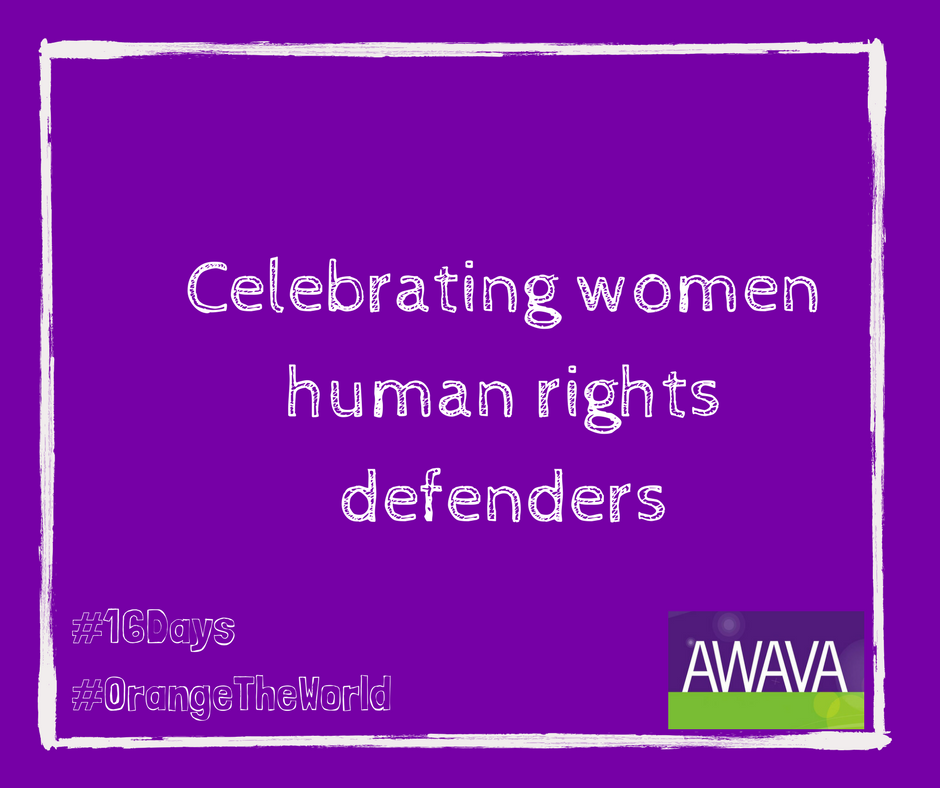
 In 1998, a landmark Declaration on Human Rights Defenders was adopted by the UN General Assembly, providing recognition to people who work to protect and promote human rights. While in every region human rights defenders become subjected to violence, women human rights defenders are often targeted not only for their “activism but also because of their gender and their activities are repeatedly delegitimized and denigrated”.
In 1998, a landmark Declaration on Human Rights Defenders was adopted by the UN General Assembly, providing recognition to people who work to protect and promote human rights. While in every region human rights defenders become subjected to violence, women human rights defenders are often targeted not only for their “activism but also because of their gender and their activities are repeatedly delegitimized and denigrated”.
With the recognition of the gendered dimension of human rights work, in 2013 the UN General Assembly adopted a Resolution 18 focusing solely on women human rights defenders.[2] The resolution provides a comprehensive and nuanced understanding of the “structural and systemic discrimination and violence they face and calls upon states to create a safe and enabling environment for them”.[3]
Amnesty International states that “women human rights defenders face various forms of gender-based violence in addition to the attacks other human rights defenders might face, including sexual violence, and threats, harassment and defamation campaigns linked to their status as women”.[4] Often, women human rights defenders work in traditional settings and challenge traditional norms, thus becoming more vulnerable to gender-based violence and attacks. Women are also often subjected to family and community rejection because of the perceived fear from the latter that women’s human rights work threatens their culture, tradition or values.
Women who are adopting intersectional approaches in their human rights work and who are working with Indigenous communities, LBGTIQ communities or others experience double if not triple discrimination. Amnesty International states that “LGBTI defenders experience intersectional discrimination, both for their work as human rights defenders and because they experience transphobic or homophobic discrimination because they are or are perceived as being LGBTI”.[5]
Women are often subjected to sexual harassment during official negotiations or advocacy meetings, including by being objectified and disregarded as experts. Consider these two recent examples from UN climate negotiations.
Women working on the issues of sexual and reproductive rights, gender equality, family and domestic violence are also vulnerable to abuse and threats, including technology-facilitated abuse. For women in regional and rural areas, the risks are increased due to the fact that they are normally known to both victim/survivors and perpetrators. Women also become targets for trolling and cyberbullying online for promoting of equality and rights of women and girls.
It is important to recognise the specific challenges this group of defenders face, in order to strengthen protection mechanisms and other responses to their specific concerns at both local and international levels.
Today on the International Day of Human Rights Defenders, we are celebrating the courage and commitment of women who dedicate their lives to achieve justice and equality for all.
Resources:
- Amnesty International 2017 Human rights defenders under threat https://www.amnesty.org/en/documents/act30/6011/2017/en/
- Amnesty International 2015 Their lives on the line: Women human rights defenders under attack in Afghanistan https://www.amnesty.org/en/documents/asa11/1279/2015/en/
- OHCHR Women Human Rights Defenders http://www.ohchr.org/EN/Issues/Women/WRGS/Pages/HRDefenders.aspx
- International Coalition of Women Human Rights Defenders http://www.defendingwomen-defendingrights.org/
References cited:
[1] Amnesty International (2017) Human Rights Defenders under threat: shrinking space for civil society.
[3] Amnesty International (2015) Their lives on the line: Women human rights defenders under attack in Afghanistan.
[4] Amnesty International (2017) Human Rights Defenders under threat: shrinking space for civil society.
[5] Ibid.

